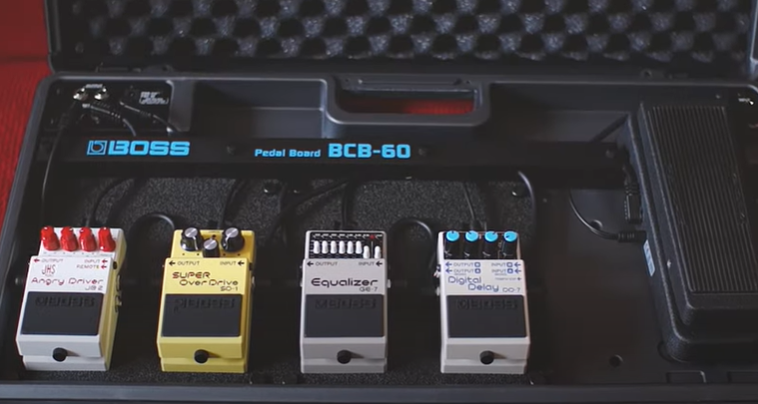What are Basic Pedalboards?
As a guitarist, you know how essential it is to have the right gear to create your desired sound. One essential piece of equipment that can help you achieve that perfect sound is a pedalboard. A pedalboard is a flat board or panel that guitarists use to hold and organize their guitar effects pedals. Basic pedalboards, in particular, are a straightforward and easy-to-use option that every beginner guitarist should know about.
What is a Basic Pedalboard?
A basic pedalboard is a simple and affordable solution for organizing your guitar pedals. It is typically made of lightweight and durable materials like plastic or aluminum. A basic pedalboard can be easily transported to gigs or practice sessions and usually accommodates a few pedals. It typically comes with Velcro strips or other adhesive materials to attach the pedals to the board securely.
While basic pedalboards are not as sophisticated as their more expensive counterparts, they still offer a range of benefits that make them an excellent choice for many guitarists. For instance, they provide an easy way to keep your pedals organized and reduce clutter on stage or in your practice space. They also help ensure that your pedals are in the right position for easy access during performances or recordings.
What Are the Components of a Basic Pedalboard?
A basic pedalboard consists of three primary components: the board itself, the power supply, and the cables. Each of these components plays a crucial role in the performance of the pedalboard.
The Board
The board is the foundation of the pedalboard. It is typically made of sturdy and lightweight materials like plastic or aluminum. The size of the board varies, depending on the number of pedals you want to attach to it. Basic pedalboards come in different sizes, from small and compact to larger boards that can accommodate several pedals.
The Power Supply
The power supply is another essential component of the basic pedalboard. It provides the necessary power to the pedals, allowing them to function correctly. Basic pedalboards usually come with a simple power supply that plugs into a standard electrical outlet. Some pedalboards also come with battery-powered options, which can be convenient if you need to play in areas without electrical outlets.
The Cables
The cables are the connectors that allow you to link your pedals together and connect them to the power supply. Basic pedalboards come with pre-cut and pre-soldered cables that are designed to fit the board’s size and shape. The cables are typically color-coded to make it easy to identify which pedal is connected to which cable.
How to Set Up a Basic Pedalboard?
Setting up a basic pedalboard is a simple and straightforward process. Here are the basic steps involved:
Step 1: Choose the right board size
Choose the right board size for the number of pedals you want to attach to it. Consider the size and weight of your pedals, and ensure that they will fit comfortably on the board.
Step 2: Attach your pedals
Attach your pedals to the board using Velcro strips or other adhesive materials. Ensure that they are in the right position and securely attached to the board.
Step 3: Connect the pedals
Connect the pedals using the pre-cut and pre-soldered cables that come with the pedalboard. Ensure that the cables are correctly plugged into the pedals and that they are not tangled or twisted.
Step 4: Connect to the power supply
Connect the power supply to the pedalboard using the appropriate cables. Ensure that the power supply is securely connected to the board and that the cables are not tangled or twisted.
Step 5: Test your pedals
Test your pedals to ensure that they are working correctly. Check the power supply and cables for any issues, and troubleshoot any problems as necessary.
Basic pedalboards are an excellent option for guitarists who are just starting with effects pedals or those who only use a few pedals. They are affordable, easy to use, and provide an efficient way to organize your pedals. With a basic pedalboard, you can ensure that your pedals are in the right position for easy access during performances or recordings.
When choosing a basic pedalboard, consider the size and weight of your pedals, the number of pedals you want to attach to it, and the durability of the board. You should also consider the power supply and cables that come with the board and ensure that they are compatible with your pedals.
Setting up a basic pedalboard is a simple and straightforward process that involves attaching your pedals to the board, connecting the pedals using pre-cut and pre-soldered cables, and connecting the power supply to the board.
In conclusion, a basic pedalboard is an excellent investment for any guitarist looking to organize their pedals and achieve the desired sound. While they may not have all the features of more expensive pedalboards, they are a great way to get started and ensure that your pedals are in the right position for easy access and efficient use. With a basic pedalboard, you can focus on playing and creating music without worrying about clutter and disorganization.


